One of the models that we see most on our roads, the Renault Mégane ST, has seen, for several generations, much of its success in our country associated with the acronym “dCi”.
It was like that in the second generation (that of Guilherme's famous van), in the third and it has been, still, in the fourth. However, the “winds” of the automotive world are currently blowing away from Diesel engines — we have seen, for example, the role of TCe (gasoline) growing in recent years —, so Renault has joined the trend of the moment ( for obvious reasons), the electrification of his popular van.
Practically the same as its sisters in the aesthetic chapter, it is under the hood (and the trunk floor) that Mégane ST E-TECH, the name that defines this hybrid plug-in version, hides the new features and tools that allow it to assume its position. as an alternative to the Diesel variant for those who really want to walk and spend little.
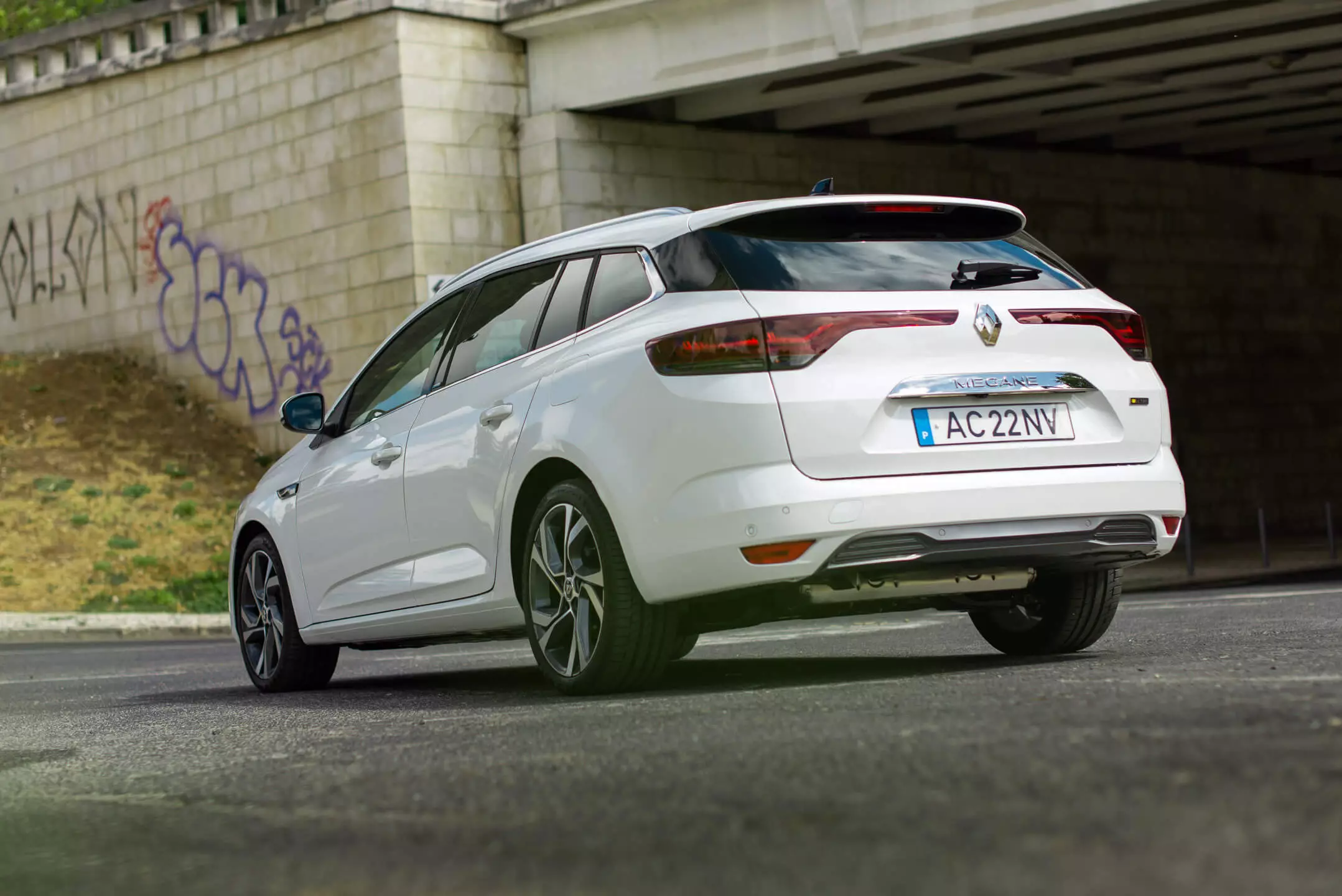
But will it fulfill what it sets out to do? Does it have what it takes to take the place of the Diesel version? To find out, we put it to the test.
The adopted recipe
Renault “married” a 1.6 l gasoline engine with 91 hp and 144 Nm to two electric motors. One, the largest, has 67 hp and 205 Nm and serves to power the Mégane ST E-TECH. The other, smaller, has 34 hp, 50 Nm and works as a starter and energy generator, taking advantage of decelerations and braking.
Subscribe to our newsletter
The end result is 160 hp of maximum combined power and around 50 km of autonomy in 100% electric mode (WLTP cycle). Courtesy of the 9.8 kWh lithium-ion battery that forced the trunk of this family van to shrink from 521 l to a much more modest 389 l.
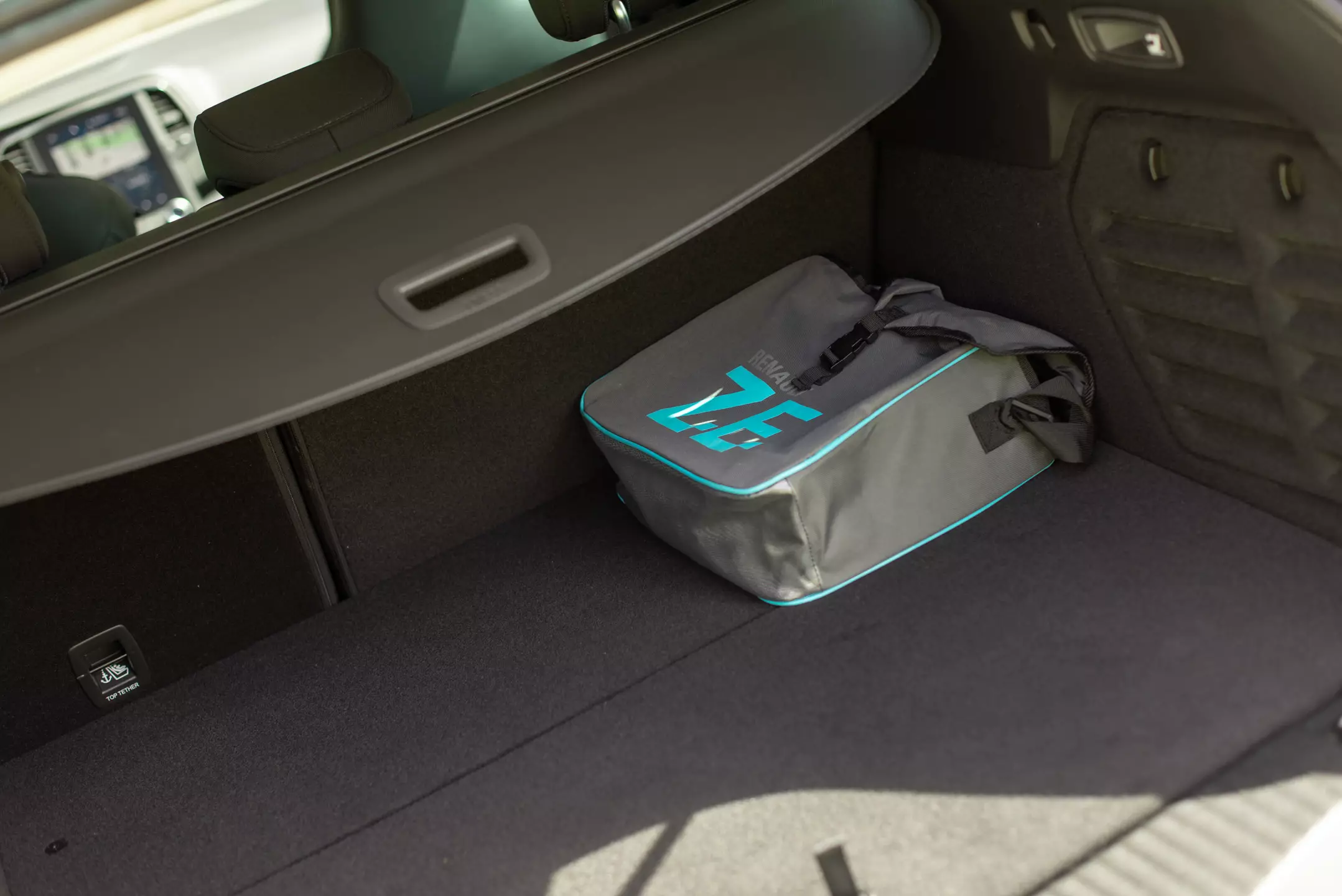
Finally, in the field of transmission we have a multimode clutchless gearbox that uses the technology used by Formula 1 cars and offers up to 14 (!) speeds.
constantly improve
If on the outside the changes are of detail — not only compared to the previous version but also to the variants with a combustion engine only — inside we already have more innovations.
Renault did its homework and, in addition to correcting the hitherto debatable positioning of the controls for the cruise control and speed limiter (they moved from the center console to the steering wheel), it also offered Mégane ST E-TECH a new digital instrument panel of 10.2” and a new infotainment system which, in this case, had a 9.3” screen.
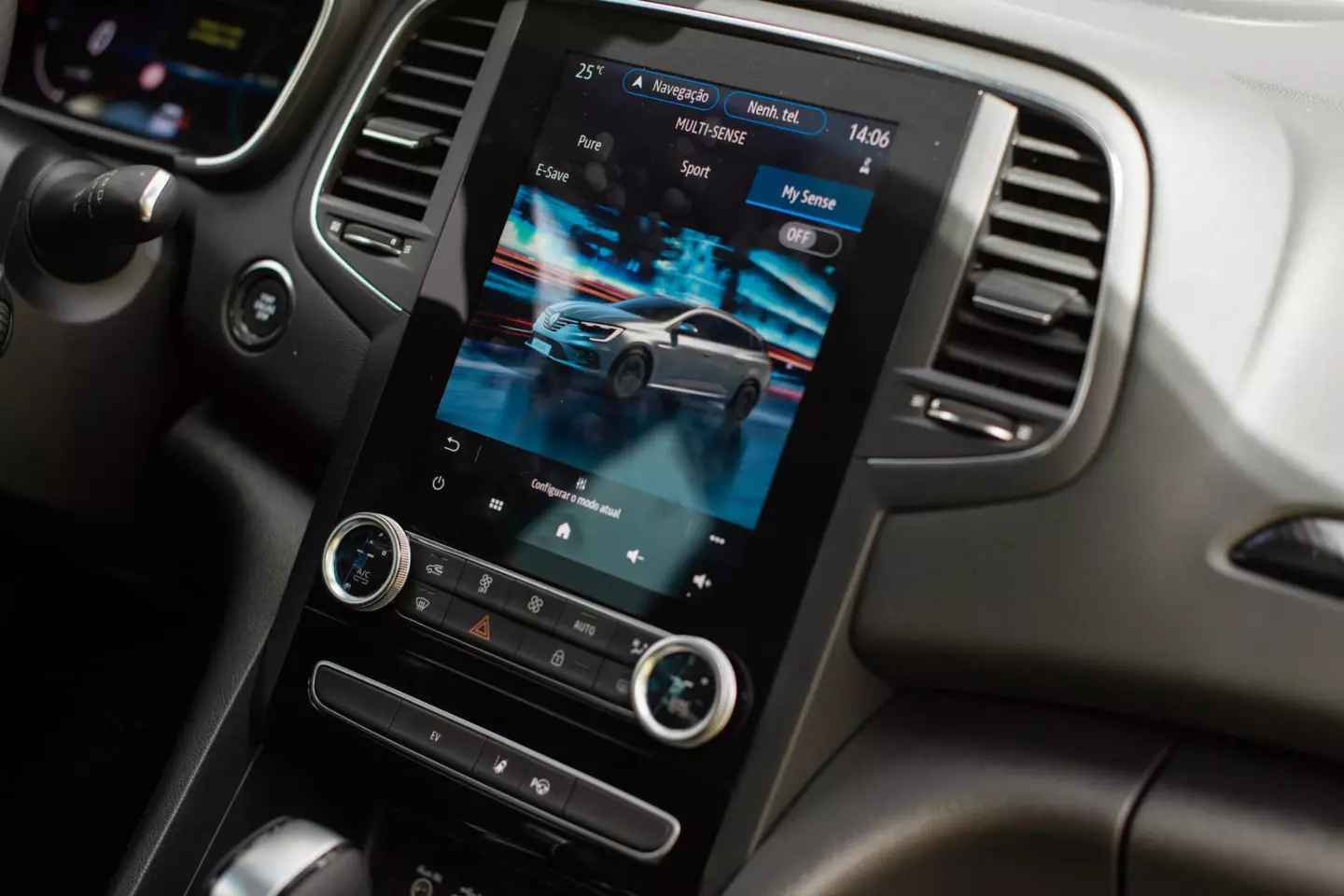
The new infotainment system, in addition to being complete, has a much more modern graphics.
More complete and with a much more modern graphics, they maintained the ease of use that their predecessors already offered.
Another of the improvements carried out by Renault resulted in an increase in the quality not only of materials (we have more soft-touch materials spread throughout the cabin) but also of assembly, something confirmed in the long kilometers covered by Lisbon's streets and alleys, where parasitic noises were not very much made. to feel.
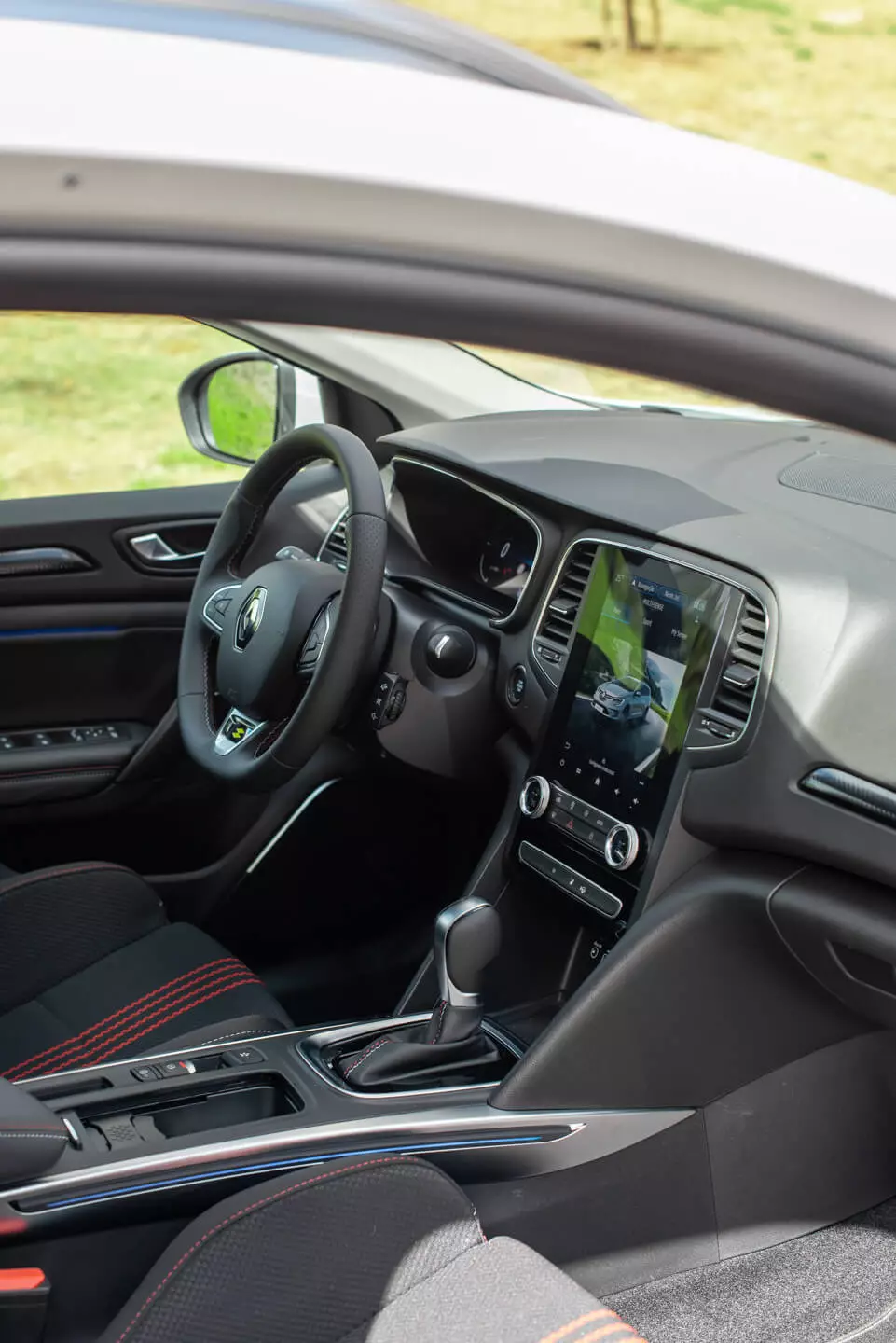
Comfortable but not only
Interestingly, like the last Mégane ST I tested, this unit also had sports seats. In this way, what I said in the past applies again: comfortable and with a lot of lateral support, these become rather uncomfortable in some maneuvers, as we end up bumping our elbows on the sides of the seat.
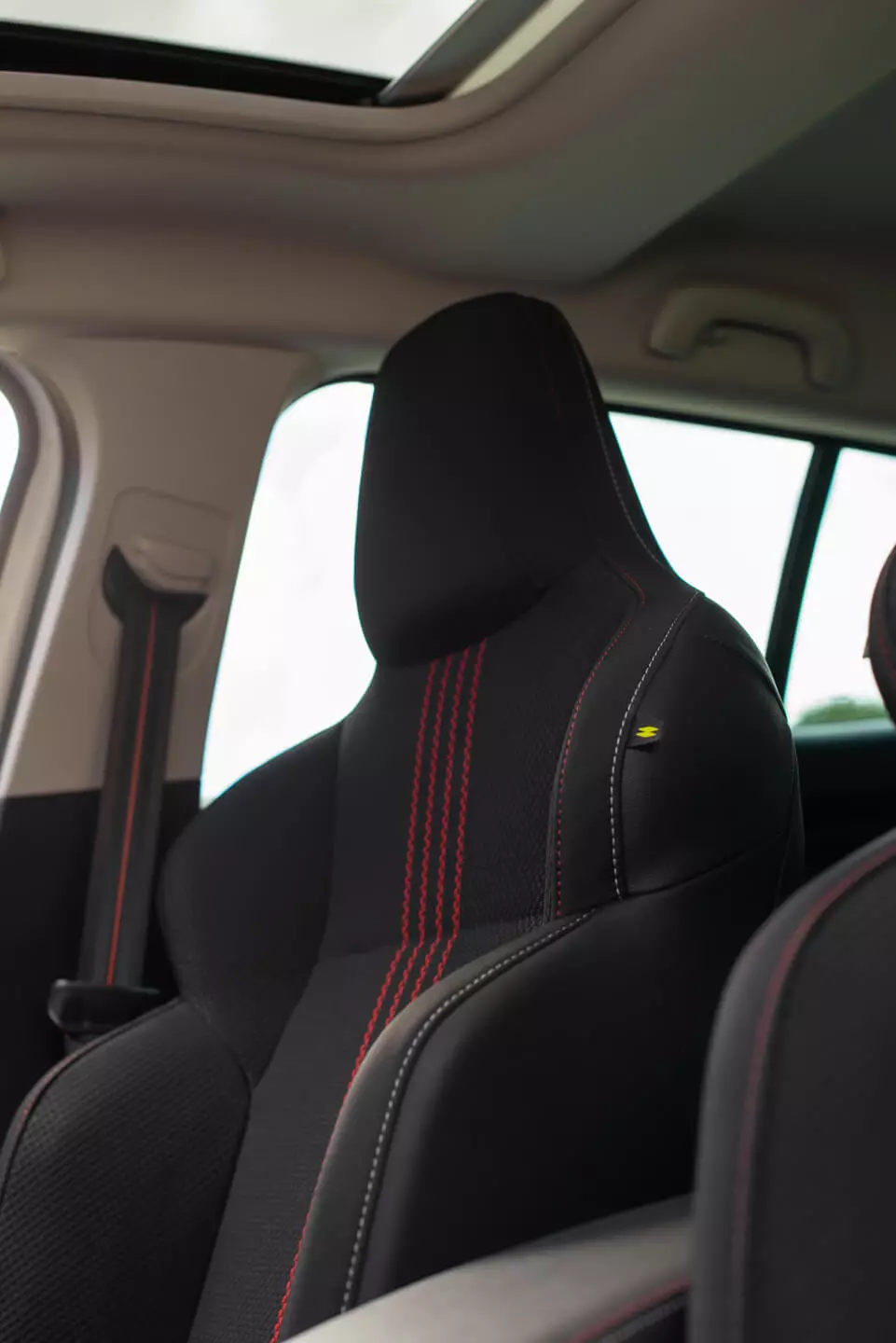
In progress, there's something that stands out aboard this plug-in hybrid version: the smoothness of operation. Whether for the silence when driving in 100% electric mode (or in hybrid mode at calm paces) or the smoothness of the multi-mode gearbox without a clutch, this Mégane ST E-TECH conquers for its comfort.
But don't think that this comfort is synonymous with a less careful dynamic. In this way, we continue to have a chassis and suspension that are guided by efficiency and that allow the Gallic van to safely and comfortably face the chains of curves without the extra weight of the batteries being felt too much.
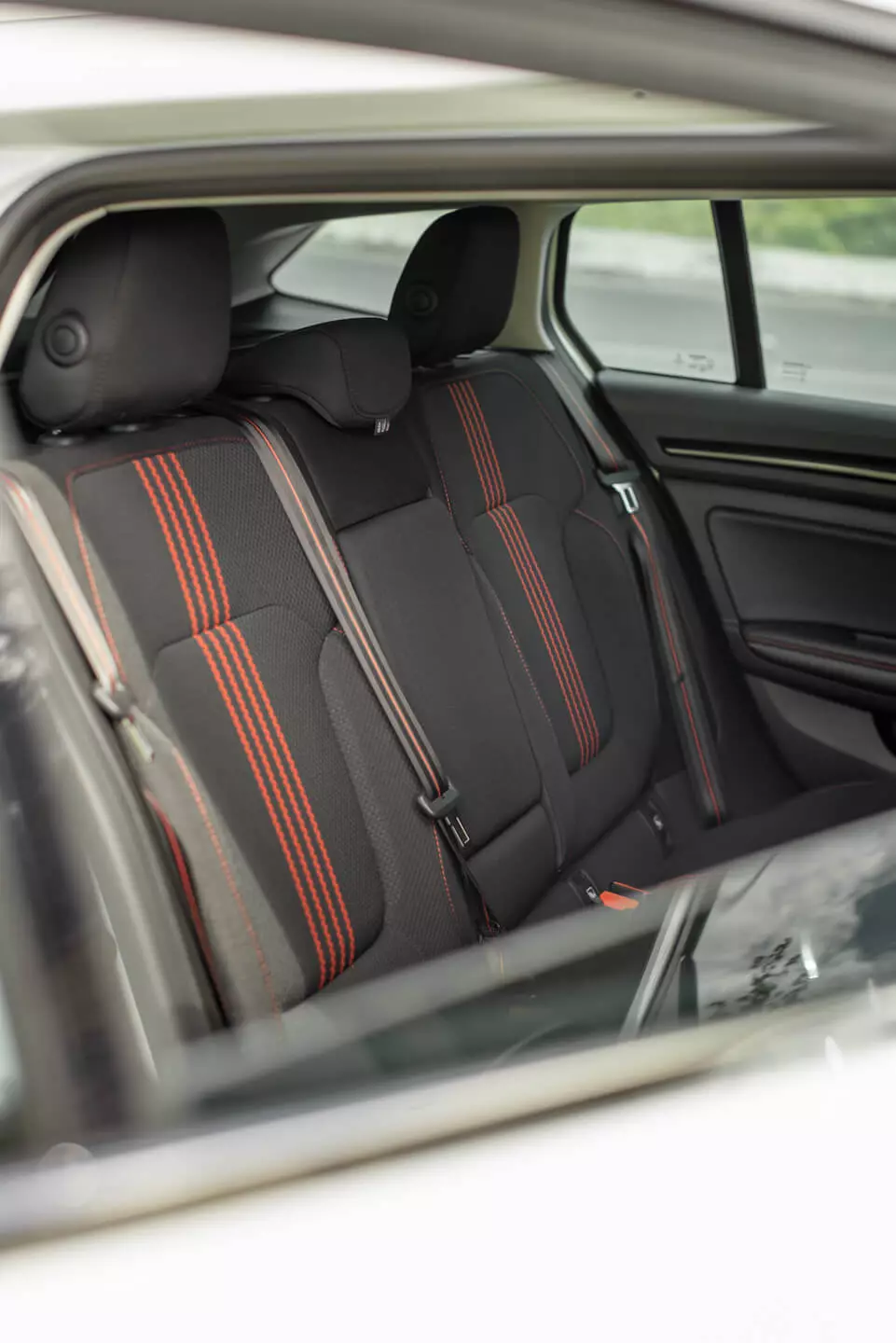
As for the steering, despite not revealing the levels of precision and speed used by the Ford Focus, it is in a good plan, and it is just a pity that in "Sport" mode it is a little too heavy (especially if we forget to select another mode when doing stunts).
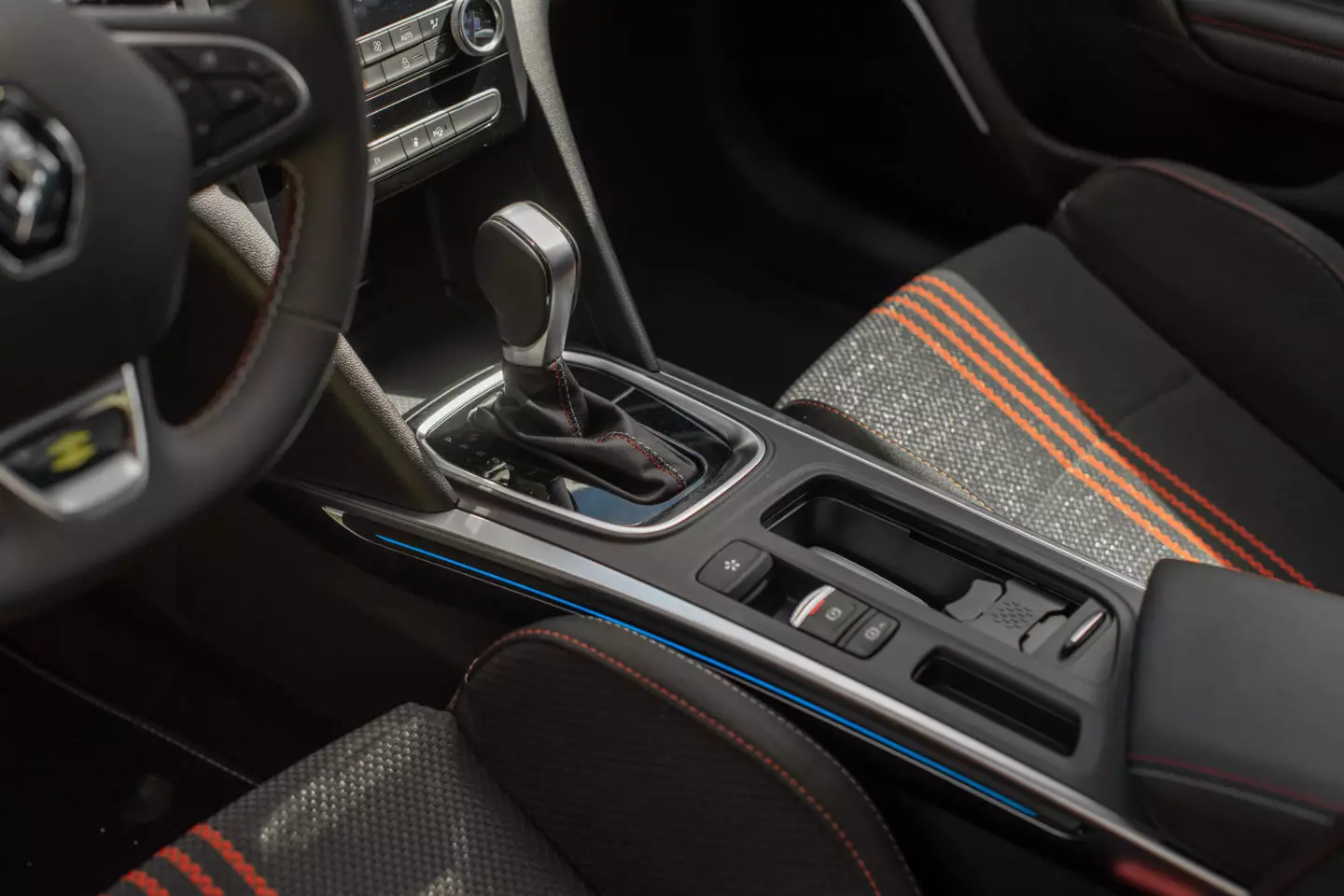
In transmission mode "B" energy regeneration allows the brake pedal to be given a lot of slack.
well studied lesson
If in the dynamic chapter the Renault Mégane ST E-TECH follows on the path of what we already knew, it is obvious that there is an area where this is completely new: the plug-in hybrid engine.
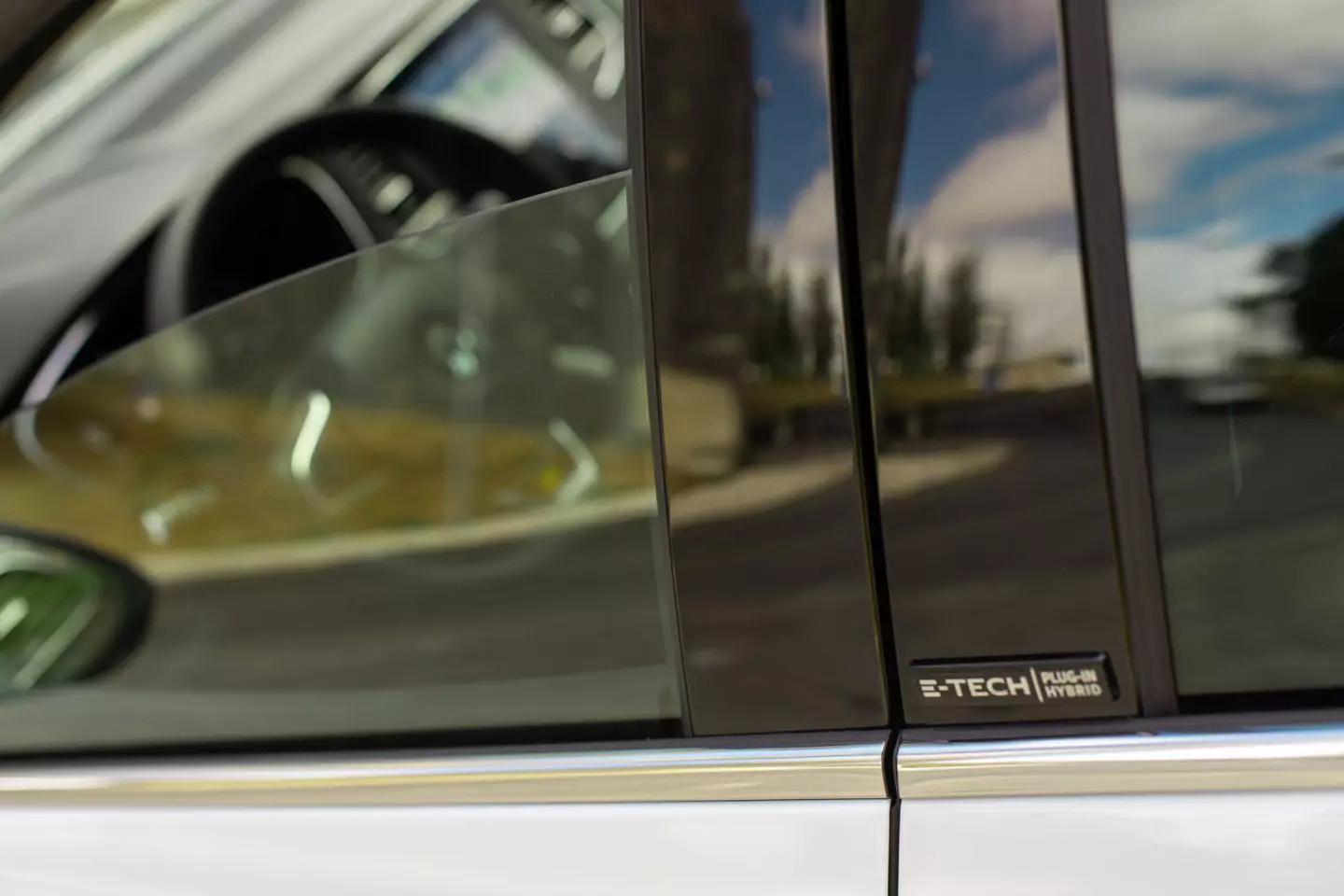
Details. This is what distinguishes this Mégane ST from the rest on the outside.
Starting with 100% electric mode, Renault seems to have applied the lessons learned from Zoe with regard to battery management, presenting itself in this chapter much better than some more expensive models and from a segment above.
This translates into the possibility of covering (mainly in urban areas) the kilometers promised by the brand and without concessions to the imposed pace, either in 100% electric or hybrid mode, which is why I have rarely seen average consumption rise above 5 l /100 km throughout this test (they almost always walked 4.5 l/100 km).
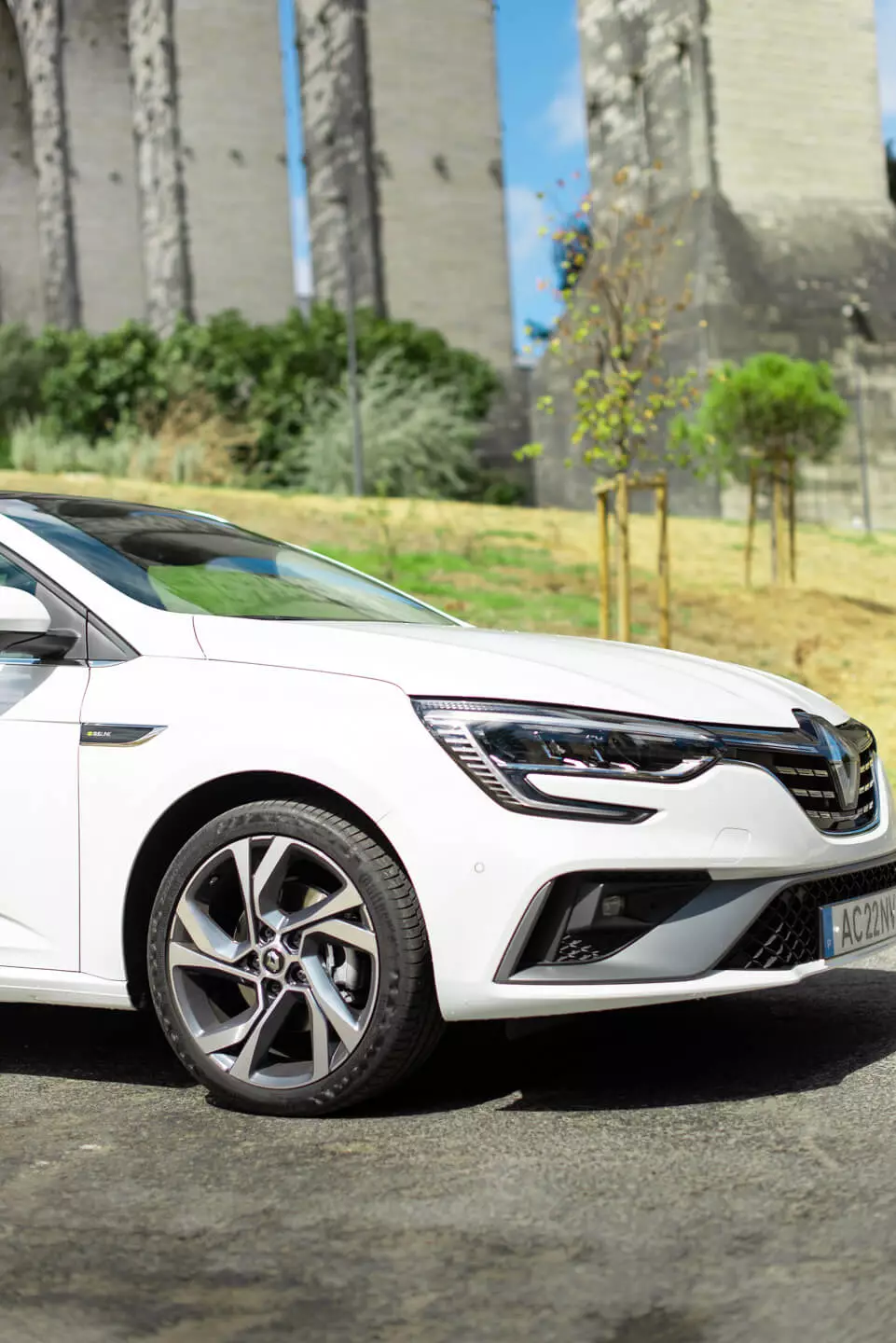
When the internal combustion engine kicks in, it has two ways of presenting itself. If we opt for a calm tone, it presents us with low consumption and we practically don't even notice it, such is the smoothness of the plug-in hybrid set, a notable contrast with the diesel engine versions.
If we want to explore the entire 160 hp of combined power (mainly in “Sport” mode) or if we ask the 1.6 l to recharge the battery, it ends up making itself heard with a little more insistence in the cabin. Even so, and despite this, it continues to maintain consumption at values that were usually reserved for Diesel.
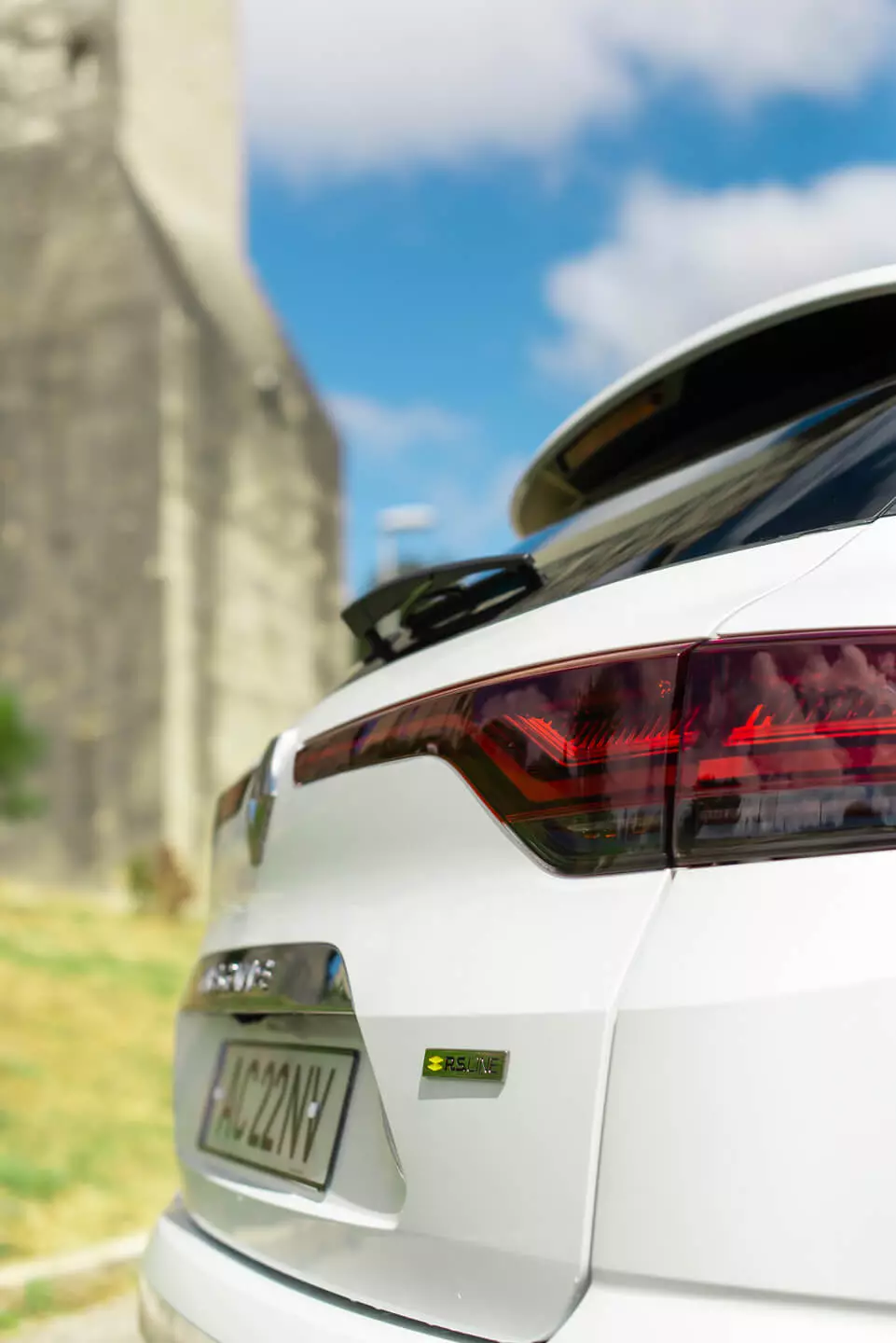
Finally, in terms of performance, electric motors always help us to gain some advantage when starting, with Mégane ST E-TECH living up to the advertised power.
Is the car right for me?
I started this text with a question and the truth is that after a few days at the wheel of the first plug-in hybrid Renault Mégane I easily found the answer: for me, this version is better than the one equipped with a Diesel engine.
Capable of consumption capable of rivaling that of Diesel on the open road, Renault Mégane ST E-TECH manages to present us with an economy in urban areas that diesel versions can only dream of.
To do this, the only thing that "requires" us is that we don't forget to load it, something that, considering how much we can save on daily trips around town, this shouldn't be an obstacle when choosing it, and in this aspect only the higher price compared to Diesel can appear as an obstacle when choosing (in the case of individuals).
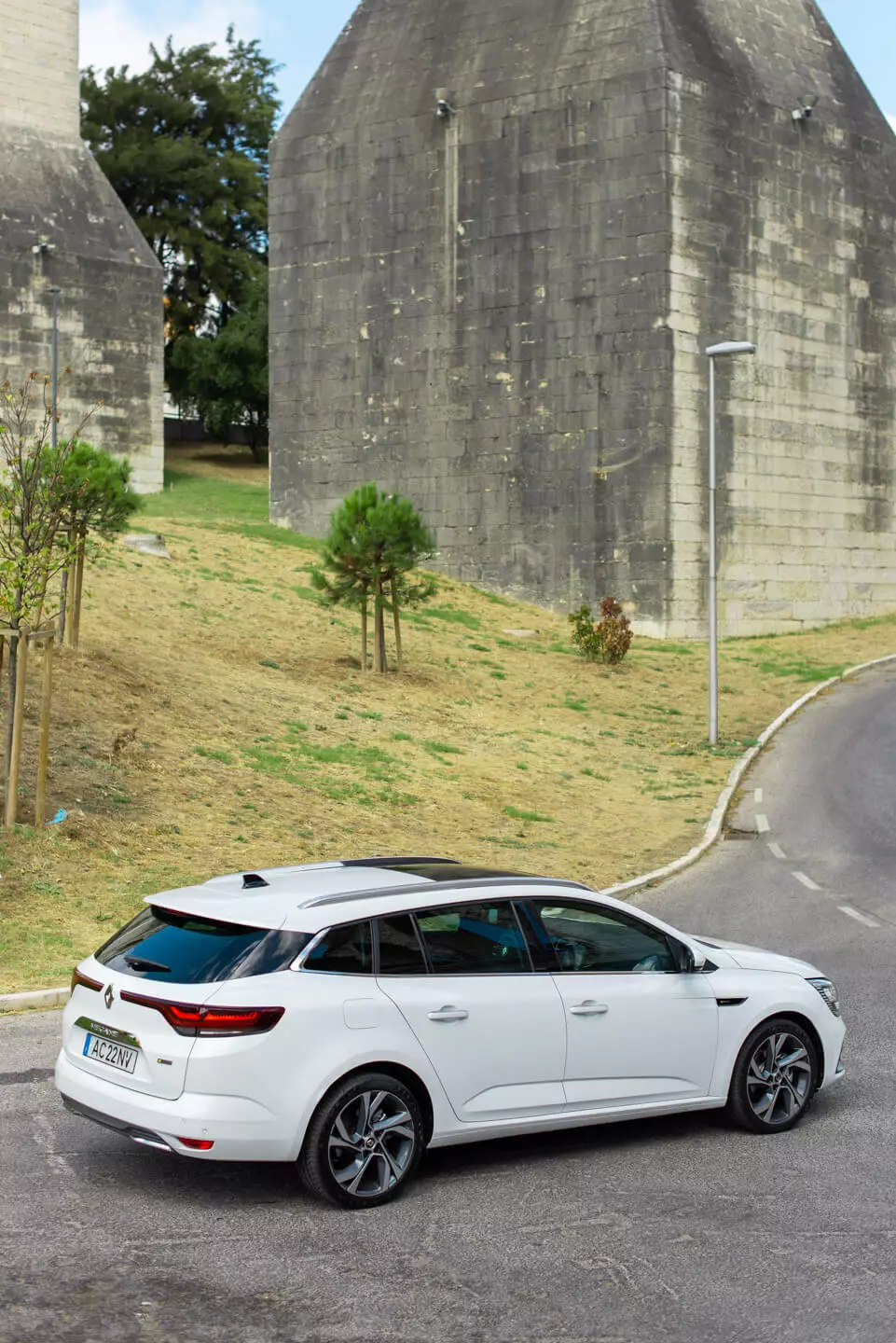
That said, if you are looking for a comfortable and safe family van and you are traveling many kilometers not only on the road but also in urban areas, the Renault Mégane ST E-TECH may well be the ideal choice.
It's true that it lost luggage capacity, but it is no less true that it is a future-proof model and prepared to face an era in which models exclusively with internal combustion engines could become persona non grata in city centers.
